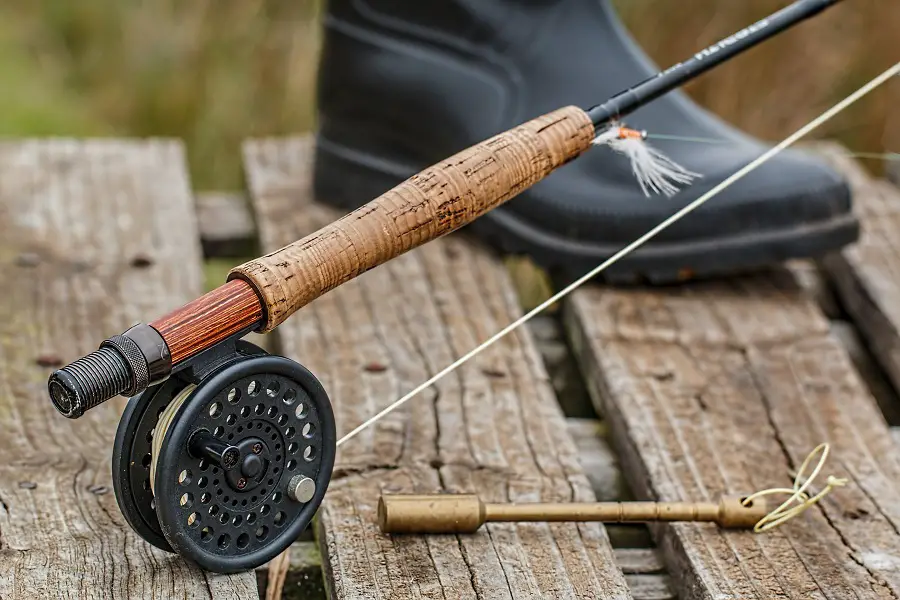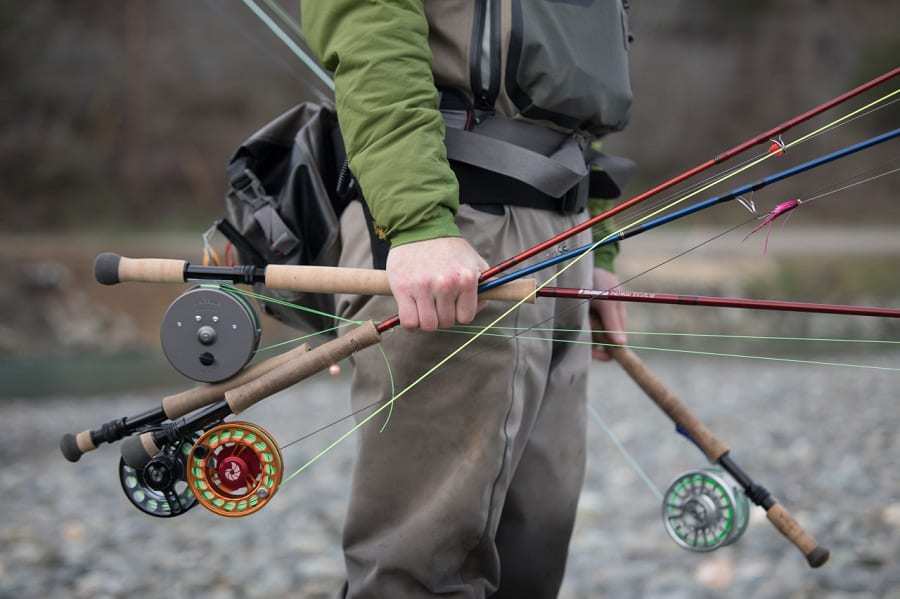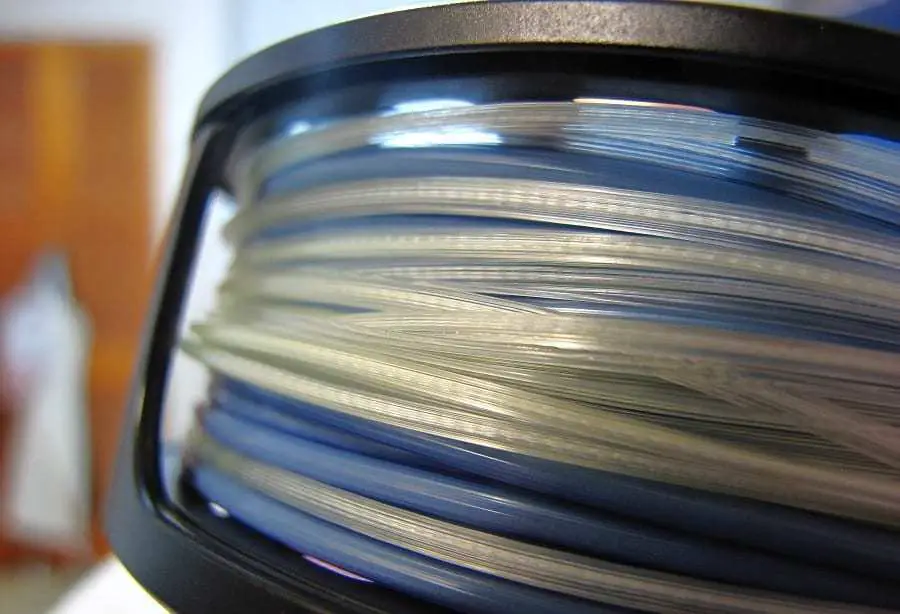Fishing is a great way to get out and enjoy the outdoors.
Whether you’re an experienced angler or just starting out, learning how to string a fishing pole can help you land your next big catch!
The process may seem daunting at first, but with our step-by-step guide on choosing the right fishing pole, assembling it correctly, setting up your rig for success and casting off in style – we’ll make sure that even newbies will be able to string a fishing pole like pros.
Finally, don’t forget about caring for your gear so that every time you go out is as successful as possible. So what are you waiting for?
Let’s learn how to string a fishing pole together!
Choosing the Right Fishing Pole
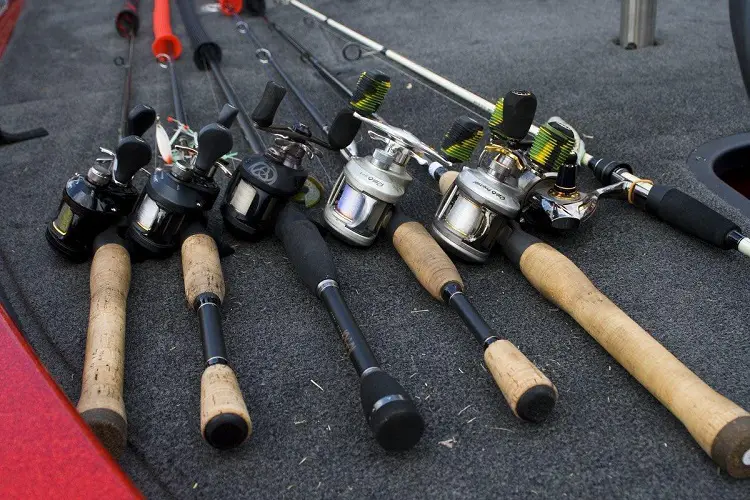
When selecting a fishing pole, it is important to consider your skill level, the length of the rod, and the action of the rod.
Consider Your Skill Level
If you are a beginner angler, look for rods that are lightweight and easy to use.
A good starting point is an all-purpose spinning rod with a medium-light power rating and fast action tip. This type of setup will be easier to cast than heavier rods and will provide enough backbone for most freshwater species like bass or panfish.
If you’re targeting larger game fish such as pike or musky then you may want to opt for a heavier setup with more power in order to handle their size and strength when fighting them on your line.
Choose The Right Length
The length of your fishing rod should also be taken into consideration when making your selection.
Longer rods can help increase casting distance while shorter rods can offer better accuracy when casting close quarters around cover or structure where fish might hide out during certain times of year.
Generally speaking, if you plan on fishing open water then longer lengths between 6’6” – 7’6” are ideal whereas if you plan on doing some finesse style presentations in tight spaces then shorter lengths between 5′ – 6′ would work best for those scenarios.
Select The Right Action
Choosing the right fishing pole is essential for a successful and enjoyable fishing experience.
Now that you have chosen the perfect rod, it’s time to assemble your new setup.
Assembling Your Fishing Pole
Assembling a fishing pole is an easy process that can be completed in just a few steps.
Start by attaching the reel to the rod, which will usually involve lining up two pieces of metal and securing them with screws or clips. Once the reel is attached, it’s time to thread line through the guides on your rod.
This helps keep your line from tangling and allows for smoother casting. Finally, tie on a swivel and hooks for your bait or lures. Swivels help prevent line twist while also allowing you to change out baits quickly without having to re-tie knots each time.
When attaching the reel to the rod, make sure that both pieces are lined up correctly before tightening any screws or clips. If they aren’t aligned properly, it could cause problems when casting or retrieving your lure later on down the road.
Take care not to overtighten these components as this could damage either piece of equipment over time due to excessive strain being placed upon them during use.
Threading line through guides can be tricky at first but becomes easier with practice and patience.
Start by running one end of your line through all of the guides until you reach the tip top guide at the very end of your rod – this should be done in order from the bottom (closest) guide up towards top (farthest) guide so as not to miss any along way.
When finished tying off swivel/hooks onto other end of line – make sure knot is secure enough so as not come undone during use yet still able untied easily if needed later on down road.
Finally, when tying off swivels and hooks onto other end of line make sure knot is secure enough so as not come undone during use yet still able untied easily if needed later on down road.
This step may require some trial and error depending upon type knot used but once mastered will become second nature after awhile. Be careful here too though – don’t pull too tight else risk damaging delicate fibers within the material itself leading to potential breakage further down road…not good..
Once all these steps have been completed successfully, congratulations – you now have yourself a fully assembled fishing pole ready to go and catch some fish.
Setting Up Your Fishing Rig
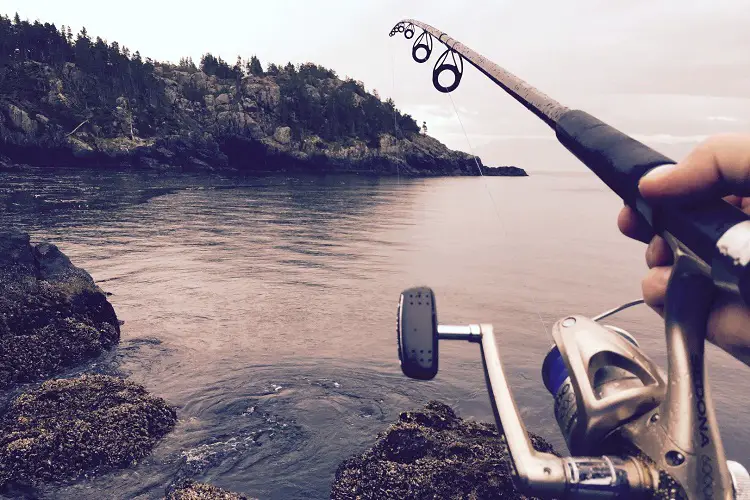
Setting up your fishing rig is an important step in the process of successful angling. It can be intimidating for a beginner, but with some practice and patience you’ll soon have it down pat.
Selecting Bait or Lures
The type of bait or lure you choose will depend on the species of fish you are targeting. Live bait such as worms, minnows, crickets, and grasshoppers work well for most types of freshwater fish.
Artificial lures such as spinners, spoons, jigs, crankbaits, and plastic worms are also popular choices among anglers.
Consider what type of water you’re fishing in when selecting your bait or lure; if it’s murky or dark then bright colors may attract more attention from the fish than duller ones would.
Once you have chosen your bait or lure, it is time to attach weights and floats to your line so that it sinks properly into the water column where the fish are likely to be feeding.
Generally speaking, a few ounces should suffice unless there is a strong current present which requires heavier weights in order to keep your line stationary at desired depths.
Floats come in various sizes depending on their intended purpose; they help keep baited hooks off bottom structure while allowing them enough movement for them to appear natural when presented to passing preyfish species such as bass or trout.
Casting Your Line
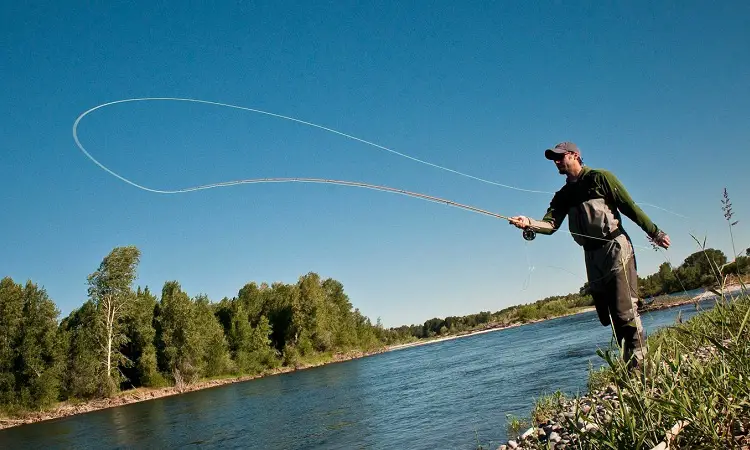
Casting your line is an essential part of fishing. Before you can start catching fish, it’s important to learn the basics of casting. There are two main types of casts: overhand and sidearm.
Once you have mastered these basic techniques, practice on an empty reel until you feel comfortable enough to try out different casts without worrying about tangling up or losing any tackle in between throws.
With some patience and practice, soon enough you will be able to accurately cast lines into even tight spaces where larger catches await.
Overhand Casting
This type of cast involves holding the rod above your head with one hand while using the other hand to hold the reel.
Then, use a whipping motion to propel the line forward in an arc-like pattern until it reaches its desired destination. Make sure that you keep your arms straight and move them in unison for maximum accuracy and distance.
Sidearm Casting
Sidearm casting is similar to overhand casting but requires more finesse as it involves throwing from a lower angle than before. To do this, hold the rod at waist level with one hand while gripping the reel with your other hand.
Then, use a quick wrist snap followed by a pushing motion with both hands to launch your line outwards towards its target area.
Make sure that you keep both arms straight throughout this process for better accuracy and control when releasing your line into open water or onto land-based targets such as logs or rocks where fish may be hiding underneath them waiting for their next meal.
Caring for Your Fishing Gear
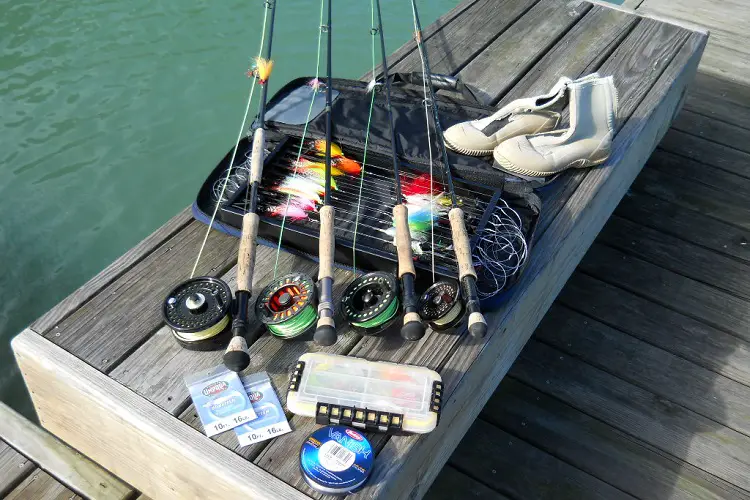
Caring for your fishing gear is essential to ensure that it lasts for years to come. Proper maintenance and storage of your rod and reel will help you get the most out of each trip, so here are some tips on how to do just that.
Cleaning and Storing Your Rod and Reel
After a day spent fishing, it’s important to clean off any dirt or debris from your rod and reel before storing them away. A damp cloth can be used to wipe down both components, removing any saltwater residue or dirt build-up.
Once cleaned, store in a dry place such as an indoor closet or garage where temperatures remain consistent throughout the year. It’s also recommended that you use a protective cover when not in use to prevent dust accumulation over time.
FAQs
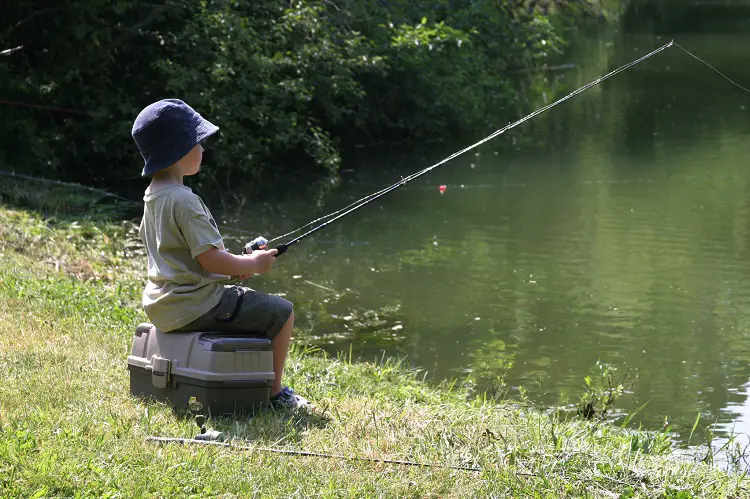
What is the best way to string a fishing pole?
Stringing a fishing pole is relatively easy and requires only basic tools. Start by attaching the line to the reel, making sure it’s wound tightly and evenly.
Next, thread the line through each of the guides on your rod in order from top to bottom. Finally, tie an appropriate knot at the end of your line that will secure it to your lure or bait.
It’s important to use a strong knot like an improved clinch or palomar so you don’t lose any fish. With these steps followed correctly, you should have no trouble stringing up your next fishing pole for success.
How do you string a beginner fishing pole?
Stringing a beginner fishing pole is easy. First, attach the reel to the rod by aligning the reel foot with the reel seat and tightening down the screws.
Next, tie your line onto the spool of your reel using an arbor knot.
Once that’s done, feed your line through each of the guides on your rod until it reaches out of tip top guide. Pull some line off of your spool and tie it to one end of a swivel or snap swivel depending on what type you’re using.
How do you put line on a fishing pole?
To put line on a fishing pole, start by selecting the right type of line for your needs. Monofilament is a popular choice as it’s strong and flexible, while braided lines are more durable and have less stretch.
Then thread the end of the line through each eyelet on your rod from top to bottom until you reach the reel.
Securely tie an appropriate knot at the end of your line that won’t slip or come undone easily. Finally, spool up your reel with enough line so that when fully extended it reaches just past where you plan to cast out into the water.
Where do you string a fishing pole?
Fishing poles can be strung in a variety of places, depending on the type of fishing you plan to do.
For shoreline or bank fishing, string your pole into the ground using a stake or sand spike. If you’re wading in shallow water, tie one end of your line to an anchor and attach the other end to your rod.
When fishing from a boat, secure one end of the line to either side of the boat and attach it directly to your rod.
Finally, when deep-sea fishing use a heavy weight at one end and clip it onto your reel for stability while trolling with bait or lures. No matter where you choose to fish, make sure that all knots are tied securely so that they don’t come undone during casting.
Conclusion
Now that you have learned how to string a fishing pole, you can go out and enjoy the great outdoors with confidence.
With the right gear and knowledge, you can cast your line and catch some fish!
Remember to always take care of your fishing equipment so it will last for years to come.
Happy fishing!
References:


